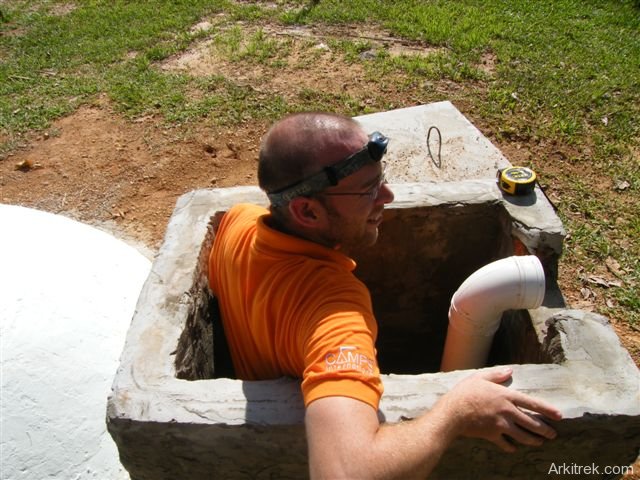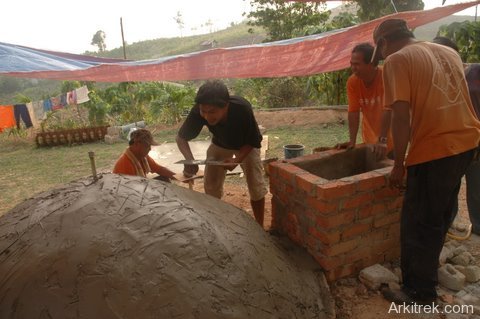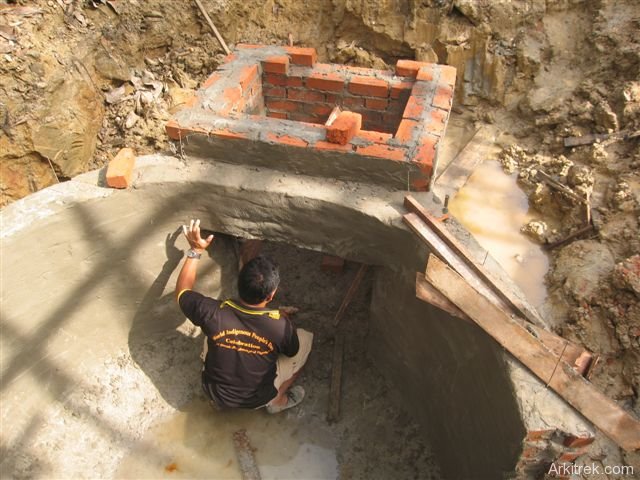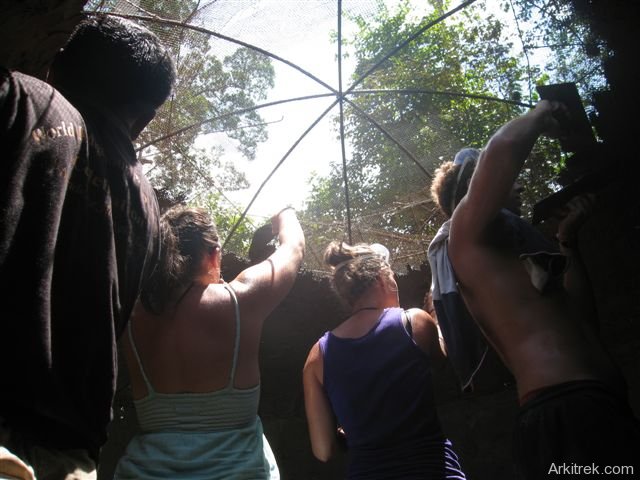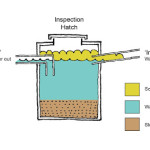Not so much as a fart of Biogas
You will recall from my earlier post that we have been building a biogas digester at Camp Tinangol with Camps International.
The aim of this prototype was to test whether a biogas digester could be built using unskilled labour, such as gap year students on a Camps International trip. We based our design on the well documented Deenbandhu model with a ferro-cement fixed dome for storing gas under water pressure.
Camps International are also working with us on a second digester at the Bornean Sun Bear Conservation Centre (BSBCC)
Our results to date have been inconclusive because the BSBCC digester is still under construction and at Tinangol, although complete, the digester has failed at the testing and commissioning stage.
Reasons for the failure at Tinangol are due perhaps not surprisingly to poor workmanship. The body of the digester was not watertight and the fixed dome was not air tight.
An important lesson that we learned is that it’s better to test a digester with water and a compressor first before you fill it with shit!
A week or so after filling the Tinangol digester with ‘fuel’ the camp residents reported a foul smell and grey water seeping up through the ground at the perimeter of the digester. We had to pump all the shit out and flush the digester twice with fresh water before it was clear to dig out around the digester back to slab level and pour an extra skin of concrete around the entire thing to block the multiple leaks.
With water-tightness rectified and tested satisfactorily we turned our attention to testing for air leakage. We did this by hiring a compressor (the type used by builders to power nail guns) and pushing an air hose down the displacement tank and into the body of the digester so that we could fill the dome with air.
Using a home made ‘U’ tube pressure gauge we sat back and waited to see whether the digester would hold the 10cm static head of water pressure that we had pumped in.
The pressure deflated faster than a whoopee cushion under a fat man’s arse.
With reference to a schoolboy trick for locating bicycle tyre punctures we coated the digester dome and gas pipes with a viscous washing-up-liquid solution and pressurised it again. By this method we quickly located gas leaks in the pipes that distribute biogas to the kitchen stove. These leaks were easy to fix with some extra plumbing tape and a silicon gun but the ferro-cement dome stubbornly refused to reveal the location of other leaks.
The digester still would not hold pressure.
We tried testing the dome at different pressure levels to see if we could isolate how far up the dome was the point of leakage. This made no difference except that at higher pressures the deflation curve was not uniform. There would be a fast initial deflation followed by a slower rate and then it would speed up again. Bubbles of air also appeared in the water in the displacement tank although we knew from the pressure gauge that the level of air in the dome was well above its underflow level at the displacement tank opening.
Our conclusion from these tests was that there were multiple points of leakage and that some leaks may be being transferred from one place to another through interstitial cavities in the ferro-cement dome and brickwork of the displacement tank.
We were not able to pinpoint the location of any of the leaks.
As the digester had already received multiple additional coatings of cement plaster we decided that it wasn’t worth putting on an extra layer to try to stop the invisible leaks.
Our strategy now is to wait until the BSBCC digester is finished and put that through the same tests. Being our second digester (more experience) and a little larger (easier working access) the quality of plastering work on this Mark II Prototype is a lot better than the first.
Meanwhile the effluent pipes in the Tinangol digester have been modified so that it can function as a normal septic tank.
If the BSBCC digester also proves to be incapable of storing not so much as a fart of methane we will look at an alternative biogas digester design; most likely with a floating gas holder where the use of prefabricated HDPE or fibreglass would more or less guarantee air-tightness.
Related posts

